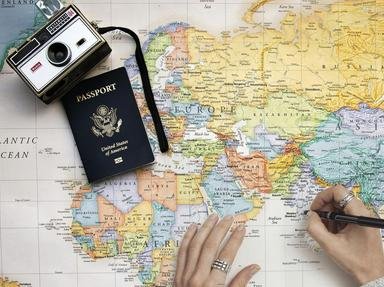Quiz Answer Key and Fun Facts
1. The moth with the largest wing area in the world shares its name with a mountain range, although it was not actually named for these mountains, and is not indigenous to them. The highest peak of these mountains is Mount Toubkal, in Morocco. Which mountain range is this?
2. There is a species of bee which is named for a country which was once known as "the Pirate Coast". The archaeological record tells us it has been inhabited by humans since Neolithic times, in spite of the harsh natural climate and conditions there. The modern day independent nation was "born" in December 1971 when its constitution was ratified. Where are we?
3. Let's all sing "We three weevils of Orient are..." or maybe not! The three species of Dynocryptus, D. melchior, D. balthasar and D. gaspar were so named after they were discovered on one of the Three Kings Islands. This group of around a dozen small islands was discovered by Abel Tasman in the 1640s, and so named because it was Epiphany (January 6th) when he anchored there. Which country has sovereignty over the Three Kings (and their weevils)?
4. There is a beetle of the Genus Popillia which is named for its country of origin, even though it has now spread much further around the world. It is named for a mountainous, heavily forested country that is home to over one hundred active volcanoes. Some of the islands which belong to this country are the Bonin Islands, Marcus Island, and the Volcano Islands. Where are we?
5. Eidoleon perjurus is only found in one place in the world, in one of the states of the USA. It certainly picked a beautiful place to live, with palm trees, beaches, sunny skies and warm seas. The only downside is the somewhat extreme windy weather conditions, which can occur at certain times of the year. This is also the only state of the USA where coffee is grown, and at least one president was born here. Where are we?
6. There is an entire genus of gastropod mollusks named for the ancient city of Babylon. The only thing left of this city today is a grassy mound and some excavated artifacts, but in the third millennium BC this was a major population centre. Lying between the rivers Tigris and Euphrates, Babil Province, in which modern day country are the remains of Babylon?
7. Hypera brunneipennis is the scientific name of a particular species of alfalfa weevil which is a pest in the southwestern United States. This weevil is named for a country which is watered by one of the largest rivers in the world, and is also home to one of the largest deserts in the world. The highest peak in this country is Mount Catherine; where are we?
8. One family of nudibranchs is named for the capital city of a French overseas territory. Situated on the island of Grande Terre, this city is one of the most industrialised in the South Pacific region, and is twinned with Nice and the Australian Gold Coast. The Loyalty Islands and the Chesterfield Islands are also part of this territory; where are we?
9. Given to munching on poinsettias and lima beans, among other things, the Phenacoccus gossypii is named for a particular country in the Americas. This Spanish-speaking nation is the fourteenth largest country in the world, bordering three other countries. The Revillagigedo Islands have been part of the Province of Colima since the nineteenth century, even though they are actually in a different time zone. Where are we?
10. One particular species of cockroach, also known as a Croton bug, has been found as far north as Nunavut in Canada, but is named for a European country. The highest point in this country is the Zugspitze, and rivers include the Main, the Isar, and the Neckar. Where are we?
Source: Author
Rowena8482
This quiz was reviewed by FunTrivia editor
Pagiedamon before going online.
Any errors found in FunTrivia content are routinely corrected through our feedback system.


